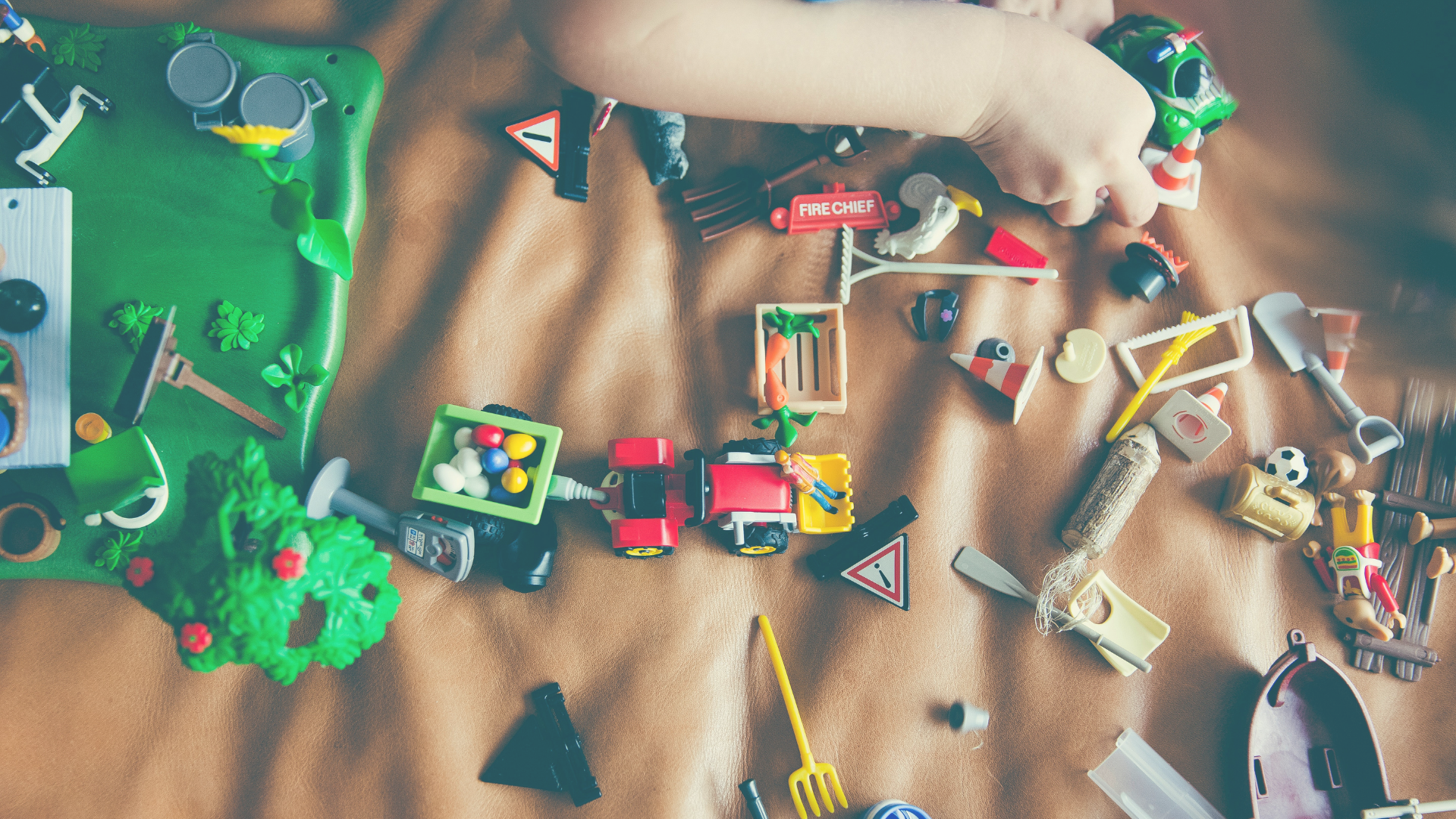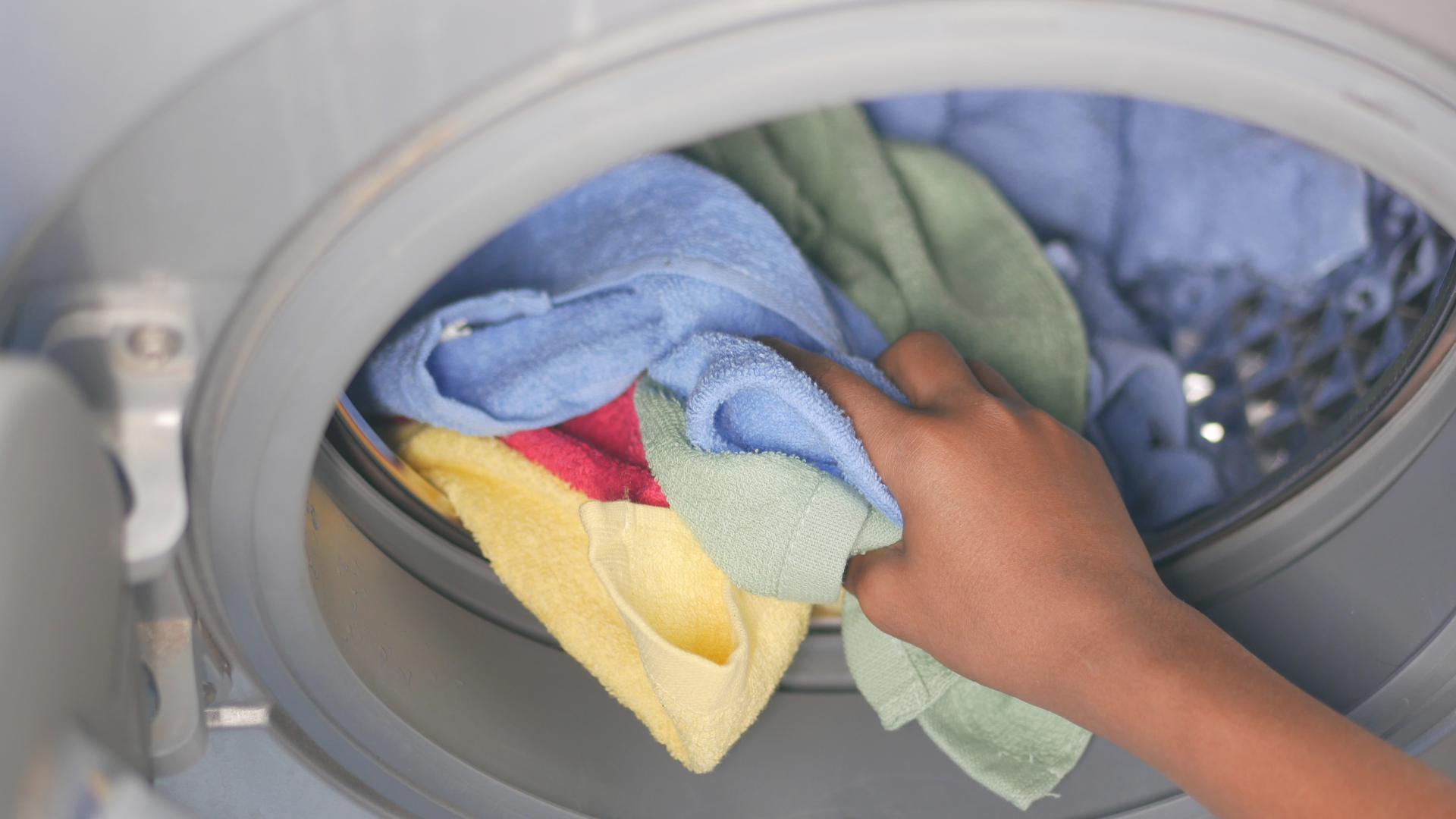Toy clutter has a tendency to come back as fast as it goes. It can get so overwhelming, and many a mama has reached out to me to express the overwhelm around toy clutter, organisation (or lack of), and the constant tidying up.
I knew I had to reach out to my friend and toy clutter expert Katy Joy Wells who has a kid-tested, step-by-step system for parents to take back control and cure toy clutter once and for all.
She graciously agreed to answer your toy clutter related questions in the form of an interview in our ‘Ask an Expert’ series.
So, without further ado, here are your questions, and Katy’s impressive answers/solutions below.
1. My son is a Lego fan. How do you suggest we store the sets where they don’t get too dusty, and it’s accessible for him to play with them?
I suggest storing sets (or any toy for that matter) at a height that ideally he can reach on his own. Low, open shelving systems are ideal as they help invite your child to actually play with their toys. If legos or toys are stored inside a closed bin or behind closed doors, it’s much easier for our children to forget they exist and not use them, as the saying goes, “Out of sight out of mind”.
Many of my clients end up storing completed sets either in their child’s bedroom or in a designated play space, it really depends on what you prefer and where your child will get the most use out of them.
2. What shelving or sorting system do you suggest that REALLY works?
When setting up a playspace, it’s important to remember that kids only play with what they can see and that the playspace should be designed to invite our children to play. So, low, open shelving with the toys displayed either in a clear bin, an open bin (with no lid), on a flat tray, or even just the toy itself on the shelf are great ways to achieve this.
If you use bins, labeling them with text and images of the toy is very helpful for kids of any age, as it helps them know where to put things back when they are finished.
Remember, having too many toys out at once can feel overwhelming to our kids and sorting and pick-up can become a frustrating experience for adults and kids alike. So, if you haven’t already decluttered any excess toys and begun a toy rotation, I’d encourage you to do so. I’ve had many clients with the “ideal” shelving and organization system but if there are too many toys, it can make it more difficult for the kids to be consistent and utilize these systems as you want them to be used.
3. How can you limit toy intake? Do you consider it rude to ask your family to stop buying loads of toys?
Whether it’s toys, kitchen appliances, clothing or anything else, it’s important that we limit things in our homes. It’s so important to set a reasonable physical boundary for all categories of things, otherwise they tend to overflow and we accumulate too much and it becomes clutter. For our toy boundary, I assigned a six-cubby open shelf system as well as a small corner next to it for 1-2 larger toys. Once toys start to overflow, that’s our cue we need to rotate (but more than likely, declutter). Teaching our kids about these physical boundaries is a life skill, just like cooking and cleaning, because it gives them more of a “concrete”, visible boundary that’s pretty simple to understand, even for a young child.
As far as gifts, it took me many conversations over the course of a few years with my family to get them on board with buying our children “experiences” rather than toys. Things like waterpark passes, zoo memberships, dance classes, restaurant gift cards, and the like. I don’t consider setting boundaries with my family “rude”, I think there are gentle ways we can do it, yet I understand each family dynamic is different. As parents, we can be extremely grateful for the gifts and toys AND also overwhelmed by them. By offering other options and setting gift-giving boundaries, it does not mean we are ungrateful. On the contrary, it helps us create a home where us and our families can flourish, be more present and live simply.
4. My issue is my son has lots of toys but he doesn’t play with anything. The only toys he uses are sensory toys. The issue is that most of these barely used toys were gifts and are sentimental to him. This is the only reason we’ve kept them. Your advice, please?
I definitely recommend toy rotation! Toy rotation is a great option to help simplify the toys, without completely getting rid of them and potentially hurting his feelings. Toy rotation is when you group a small selection of toys and put them away for a short period of time, and then bring back into rotation with their regular, well-loved toys.
The benefits of toy rotation for our children are plentiful!
- It reduces over-stimulation and overwhelm.
- Sustained play and higher attention span is enhanced with fewer toys.
- More independent and imaginative play.
- Toys used in a variety of ways.
- More likely to take on responsibility of cleaning up their toys.
One way to achieve this is to declutter (Sell/Donate/Trash/Recycle) a total of about 50% of what you start with (assuming you have not already done any big toy purges). This leaves you with 50% of the original amount. For even better results, I encourage you to cut that remaining amount in HALF, putting half (25% of original amount) into toy rotation and leaving half (25% of original amount) out in use.
Let your son know that you’re not donating his sentimental toys, you’re just putting them away “to rest” for a while, this will help put him at ease.
One mistake I see often is parents putting away (out of rotation) their kids favorite and well-loved toys, don’t do this! Since your son loves sensory toys, always keep those available to him and just rotate the other types of toys. As you incorporate the “sentimental” toys back into rotation, if he does not play with them, that’s a cue they can be donated or at least don’t need to be available for him for the time being.
As time goes on, he’ll likely completely forget about them or lose his attachment, making it easier to let go and focus on the toys he does in fact love and use.
5. I have a very spirited and active 4 year old who has a strong and vivid imagination. I try to follow Montessori, keeping things minimal and always using shelving to display toys. My question is regarding toy rotation. Some toys just end up in the cupboard for a long time because we do have quite a bit. Any tips on toy rotation and making effective use of resources would be helpful for my toy clutter issue.
It sounds like the majority of your toys are out of rotation, which is absolutely fine! I’d encourage you to commit to incorporating 1-2 of those toys into her regular toys and if your daughter doesn’t show interest, that’s a cue they can go.
Also, consider if the toys collecting dust in the cabinet are just excess and duplicate versions of what she already has, loves and uses. For example, I often have clients who have dozens of different types of building blocks (duplos, legos, wooden blocks, cardboard blocks, magnatiles, etc.) yet their kids always tend to gravitate toward their few favorites. Even though these toys collecting dust might be great, quality, open-ended toys, make your decision on whether to keep or donate based on if your daughter uses them (versus keeping toys because there is “potential” use).
For more detailed help on toy decluttering and toy rotation, check out my course that’s helped thousands of families, The Toy Clutter Cure.
6. My daughter has lots of toys. We declutter regularly, so despite having lots, she uses everything, and I cannot say we have toy clutter per se. It’s all well organised, so I’m happy with that. However sometimes I feel a little torn because i’m not a ‘minimalist’ in this area like I am in others (my way of being a minimalist – I have way more than you do, Katy!) Should I continue as is since the toys are being used and everything is organised, or should I cave in to the guilt of having more ‘than we should’ and think of a way to declutter further?
One of my favorite quotes is this, “The question is the answer.” and this is definitely the case with your question. If your daughter and you are both happy with the current toy set up, don’t feel pressure to change a thing! Never let the idea of how you think things “should” be or “should” look, make you feel guilty for something that is working beautifully for your family. Minimalism and simplifying are not one-size-fits-all. Give yourself permission to be comfortable with that and drop that guilt, it’s not doing you any good <3
7. I want to try toy rotation but I have no space to put away the toys. Is there any other method to encourage my child to use his toys more?
Simplifying the toys is the best way to encourage our kids to use them. Too many toys leads to overwhelm because it gives our children’s brains too much to sift through. I’d encourage a few things here:
Option 1: Declutter the excess (there are always things we can declutter)
Option 2: Consider storing toys “outside” of traditional storage spaces. Adding a shelf to a bedroom closet, storage bins under the bed, even in a shoe organizer/holder that goes over the door (for smaller toys) can really help. It may not be ideal, but it can be so helpful.
Option 3: Divide his toys that are out and can group them in “themes”. Maybe one “rotation” (although all toys remain available) is a Zoo. So, you group some toy animals, some building blocks to build a “zoo”, some play food to “feed” the animals, and a book about animals, you get the idea.
Then, follow your child’s lead – observe and be ready to participate and make sure to allow him space and time to create. Lastly, asking open-ended questions and narrating can be helpful. Asking things like, “What would happen if we brought the zoo animals some food?” or “What are different ways you can use this?” to help get their imagination going.
Doing so will give him an opportunity to gravitate towards one smaller grouping of toys instead of all of them at once.
8. How do you deal with a child that loves dolls and has 30 of them but refuses to give any away? I’ve tried explaining we need to declutter and all the good reasons but she won’t have it.
Here’s an analogy that can offer some perspective. Imagine if your partner, mom or sibling said to you one day, “You have too many shoes (clothes, jewelry, whatever category of things you love) and I noticed you don’t wear or use most of them. You need to get rid of them.” The knee-jerk reaction for most people, adults and kids alike, is to what? It’s to grip even harder to what you want them to let go of. “Nooo!!!! But, I LOVE my toys!!”, they say.
Before we can ever expect our children to be comfortable letting go of their own things, we need to model decluttering our own possessions. I encourage you to include them in the declutter process in a “neutral space”, where it’s not their possessions so they don’t feel pressured. Next time you’re going through your wardrobe, invite your daughter to join. Talk out loud the questions you are asking yourself and how you are deciding what to keep and what not to keep. Explain how you’re excited because decluttering what’s no longer serving you makes space for the things you love and it’s going to bless another person who will be so excited to have that garment.
I’m constantly modeling decluttering and donating (and the purpose behind it) to my two sons (ages 5 & 6) and I’m certain this one thing has made the biggest impact on their willingness to declutter versus just telling them they need to or should declutter, which often causes resentment, upset and the opposite effect of what we want.
9. In the rare instances that my kids are getting along and are so quiet playing, I let them make a mess in order to get stuff done. Then, at the end of the day, I regret it. The house is A MESS. It takes me a good 30 minutes to tidy. Any tips?
- Simplify the toys that are available, start doing toy rotation! I know some parents immediately panic when I suggest this because most people think that the more toys that are available = the busier my kids will be. But, I’ve never seen this to be the case because kids tend to play for longer periods of time with less available (assuming we group the rotation in creative ways)! One of my students went from 50 toys out at once (and 30 minute pick-ups at night) to 5 toys out at once and she was nervous but the first day her kids gleefully played with all 5 toys all day and pick-up was a breeze!
- Teach your children to do what I call “daily resets”, where they tidy up and put things back where they go BEFORE things accumulate and get overwhelming. On the weekends when my kids are home with us all day, we do 2-3 of these, typically right before a meal, every 2-4 hours or so. This is a powerful habit that I swear by! Your 30 minute toy pick up each night will go to 2-3 “resets” that take less than a few minutes each and the kids often do it completely on their own.
10. How do you control how much ‘crap’ comes into your home? Case in point, you go to Mc Donalds and they give the kids plastic toys with their Happy Meal. The kids obviously want to keep the toy, and before you know it their toy bins are filled with useless bits and pieces. How do you control this?
Fast food toys, party trinkets and the like have a 24 hour lifespan in our home for this exact reason. This is a boundary I am typically not flexible on, unless of course my child is still playing with it a few days later (which they never have). I’ve explained this to my kids (in a kind and gentle way) and my son’s also know the physical limitation we’ve established for toys (see my answer to question 3). If you don’t want to put a “24 hour” rule on these trinkets, consider what physical and relational boundaries feel best for both you and your children.
I’d love to thank Nakita for having me as a guest expert on her blog this week and loved answering your toy clutter questions!
For additional clutter resources feel free to check out:
My top-rated podcast, The Maximized Minimalist
My course, The Toy Clutter Cure
Or follow me on Instagram
Happy Simplifying!
Xx Katy







Leave a Comment